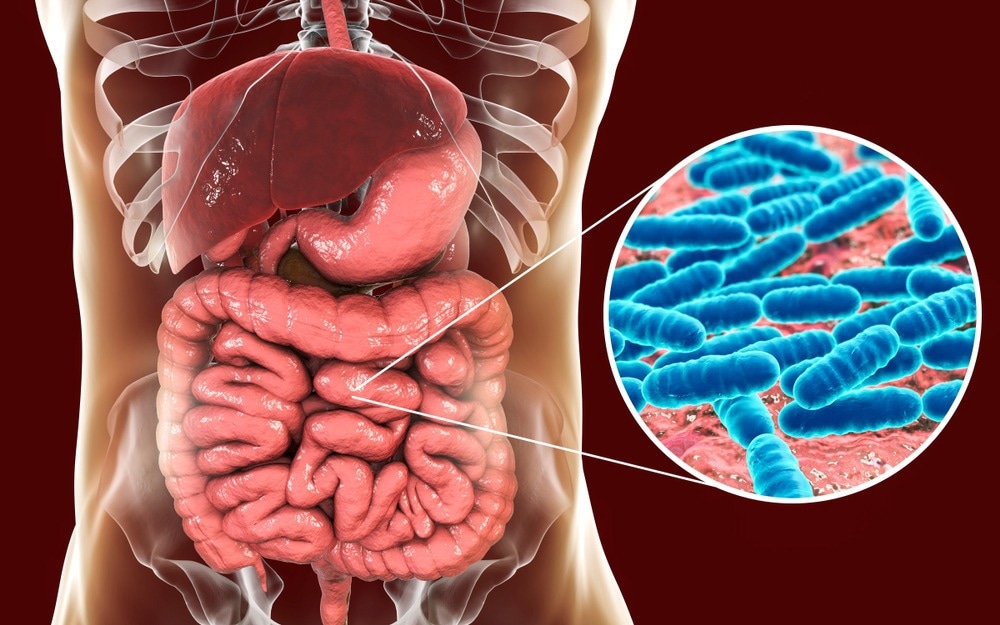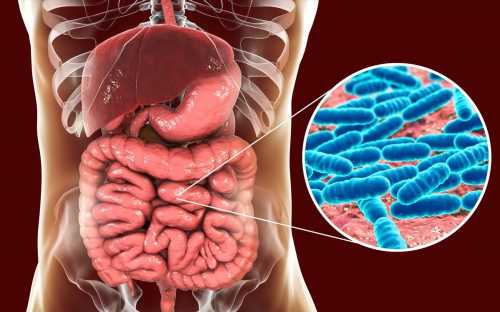In a recent study published in Frontiers in Cell Infection and Microbiology, researchers explored the complex relationship between the gut microbiome of people in different countries and the observed coronavirus disease 2019 (COVID-19) severity, measured as the hospitalization rate of the corresponding country.

Background
Microbiome composition varies with geographical location, which is associated with a range of diseases and their severity. Thus, exploring this relationship at the population level might help elucidate differences in COVID-19 severity between different countries.
About the study
In the present study, researchers analyzed 3,055 gut microbiome samples from 12 countries using a combination of conventional and machine learning approaches. The two-analysis approach strengthened the results and their interpretation by expanding the linear analysis by the traditional methods with high-dimensional (HD) analysis. The study analysis, thus, accounted for the individual- and population-level microbiome complexities.
The researchers adopted the permutational multivariate analysis of variance (PERMANOVA) to identify the top genus-level taxa differing between two COVID-19 severity groups. They used an unsupervised machine learning tool called the topological data analysis (TDA) to detect non-linear effects in the HD microbiome data of this study.
The study population comprised all healthy individuals over two years, including school-going children and adults. The team collected age data and category, with the latter obtained as meta-data. Additionally, they used sample-level demographic data on gender and body mass index (BMI).
The researchers gathered COVID-19 severity data from the Our World in Data (OWID) database, using hospitalizations as the metric reflecting the hypothesized immune-modulating effects of the microbiome. The study data comprised the hospitalizations before the COVID-19 vaccine rollout to avoid potential confounding. The team grouped all 12 countries into ‘high’ and ‘low’ COVID-19 severity groups. The former comprised Canada, Estonia, Finland, Denmark, the Netherlands, and the United States, and the latter had France, Italy, Israel, Great Britain, Spain, and Sweden. Further, the researchers used bar plots to observe differences in the overall relative abundance of microbiome across all COVID-19 groups. They ran a Beta diversity analysis to evaluate the microbiome composition-related differences between the two COVID-19 severity groups. Likewise, they used the Shannon index to account for species abundance and evenness within the microbiome population (Alpha diversity).
Study findings
PERMANOVA identified taxa explicitly associated with COVID-19, such as Eubacterium rectale and Bifidobacterium, and the genus adolescentis, as the two most useful taxa. Zheng et al. have shown that these bacterial genera influence the immune response, which explains why the researchers did not find them in severely ill COVID-19 patients. These findings also had similarities and discrepancies with other individual-level studies. Consistent with the Yeoh et al. study, the researchers found an increase in the Bacteroides population and a decrease in Actinobacteria in COVID-19 patients compared to controls. On the other hand, unlike Wu et al., the current study authors did not observe a decrease in Firmicutes as COVID-19 severity increased.
Further, PERMANOVA identified Prevotella copri, a Bacteroidetes phylum known to facilitate the development of rheumatoid arthritis by Alpizar-Rodriguez et al. and Drago in 2019. Another small study showed a reduction in Prevotella copri enrichment among COVID-19 patients and a positive correlation with upper respiratory tract severe acute respiratory syndrome coronavirus 2 (SARS-CoV-2) load; additionally, a proliferation in E.coli population in COVID-19 patients, same as PERMANOVA. Yet, TDA analysis did not show a significant association between these bacteria and COVID-19 severity. Instead, TDA found an enrichment of Prevotella copri in the same area of the graph as the high severity group, although under the significance threshold.
Further, TDA identified anti-inflammatory bacteria, Eubacterium rectale, Bifidobacterium longum, and bifidum, in association with the low group. For other viral respiratory infections, these bacterial strains offer a host of beneficial effects by stimulating the gut-lung axis. However, these two Bifidobacteria strains remained ineffective in the clinical outcomes of hospitalized COVID-19 patients in a randomized controlled trial by Ivashkin et al.
These findings suggest a negligible influence of the microbiome on COVID-19 severity. However, in reality, the microbiome might be a promising target for COVID-19 prophylaxis. A recent preprint of a randomized controlled trial (RCT) conducted by Wischmeyer et al. showed that SARS-CoV-2-exposed individuals who consumed a Lactobacillus-based probiotic daily were less prone to develop COVID-19 or developed it later than controls. Bifidobacteria species affect dendritic cells of the intestinal mucosa, as observed in a study by López et al., 2011. Moreover, they have specific effects on T cell differentiation. For instance, four B.bifidum strains have T helper 17 cells (Th17)-inducing effects. The same study evidenced that the Th17 inducer cytokine interleukin (IL)-6 drives the COVID-19 cytokine storm, which, in turn, suggests that the microbiome is a regulator of the regulatory T cells (Treg)/Th17 axis, which is accountable for protecting against pathogens without inducing an autoimmune response.
TDA offered superior performance to conventional analysis methods in examining the complex relationship between the microbiome and COVID-19 severity, resulting in inconsistencies between the current findings and the previous literature. It identified the genus Collinsella was associated with normal body mass index (BMI), and Collinsella aerofacis had a pro-inflammatory profile and regulated immunity.
Conversely, another study found a positive association of the genus Collinsella with insulin and a negative correlation with dietary fiber consumption. TDA also suggested an association with the individual- and country-level confounders, including the proportion of over 70-year-olds in the population, gross domestic product (GDP), and human development index with each other, and the three anti-inflammatory bacteria observed in the low COVID-19 severity group.
Conclusions
The current study supports the value of a population-level association design for studies examing the microbiome-COVID-19 relationship. Additionally, this work validated the use of TDA in identifying novel microbiome-disease associations. Future studies should aim at studying the direct and indirect effects of diet, wealth, and healthcare performance while examining the complex relationship between COVID-19 severity and the gut microbiome.
- Lymberopoulos, E. et al. (2022) "COVID-19 severity is associated with population-level gut microbiome variations", Frontiers in Cellular and Infection Microbiology, 12. doi: 10.3389/fcimb.2022.963338. https://www.frontiersin.org/articles/10.3389/fcimb.2022.963338/full
Posted in: Medical Science News | Medical Research News | Disease/Infection News
Tags: Anti-Inflammatory, Arthritis, Bacteria, Body Mass Index, Cell, Children, Coronavirus, Coronavirus Disease COVID-19, covid-19, Cytokine, Diet, Healthcare, Immune Response, immunity, Insulin, Interleukin, Lactobacillus, Machine Learning, Microbiology, Microbiome, Probiotic, Proliferation, Prophylaxis, Respiratory, Rheumatoid Arthritis, SARS, SARS-CoV-2, Severe Acute Respiratory, Severe Acute Respiratory Syndrome, Syndrome, Vaccine

Written by
Neha Mathur
Neha is a digital marketing professional based in Gurugram, India. She has a Master’s degree from the University of Rajasthan with a specialization in Biotechnology in 2008. She has experience in pre-clinical research as part of her research project in The Department of Toxicology at the prestigious Central Drug Research Institute (CDRI), Lucknow, India. She also holds a certification in C++ programming.
Source: Read Full Article
